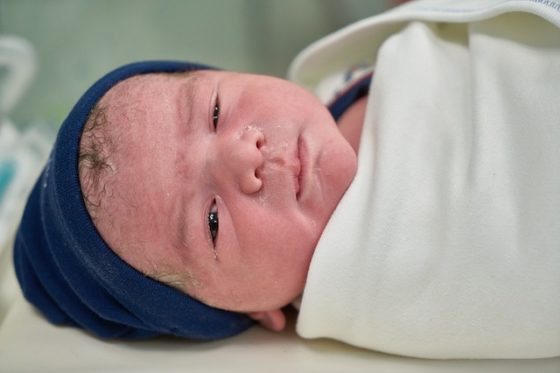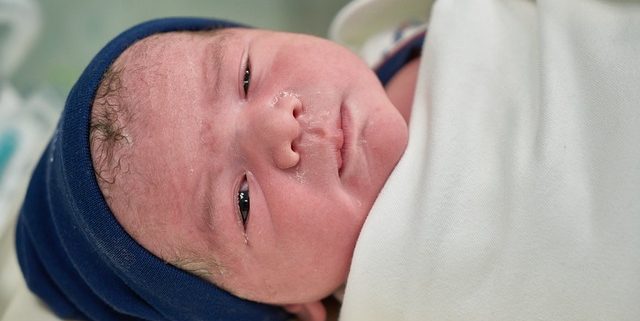Uterine Rupture: Seeking Help After a Birth Injury
Article at a Glance
- Uterine rupture is a rare yet serious condition that occurs more commonly in women who have uterine scars from a previous C-section or other surgery. If doctors don't act fast enough during childbirth, mom and baby can both be in extreme danger.
- Signs of uterine rupture, while not always specific, include pain at the site of the scar, excessive vaginal bleeding, pain at the pubic bone, and baby's head receding into the birth canal. Baby's heart rate is a major indicator of distress, and after diagnosis, doctors must work quickly to get baby out.
- VBAC (vaginal birth after Cesarean) is the most common source of uterine ruptures, though 70% of VBACs are successful. If you are considering a VBAC as part of your birth plan, you'll want to go over all the risks with your doctor ahead of labor. The success rate for VBAC decreases when taking in a number of factors, including if baby is more than 41 weeks or very large, or if labor is induced (particularly with Pitocin).
- Once a uterine rupture occurs, the uterus is removed and a woman can no longer have children. Women with more than one prior C-section who attempt VBAC have an increased risk of uterine rupture, so this, along with the experience of your doctor team, where you decide to give birth, and your individual pregnancy factors should all be considered in ways to reduce the chance of uterine rupture.

When we become pregnant, it can be difficult to think so far ahead to labor. It’s 9 months down the road, and we’re doing everything right: eating the right foods, avoiding certain types of medication, and making regular visits to our OB/GYN. It’s normal to feel anxiety leading up to the big day, but any sort of pregnancy complications before or during labor only exacerbate our nerves.
Many complications during birth can not only have an effect on baby, but also the mother. One such complication is uterine rupture, which while it affects only 1% of pregnant women is more common in those who have uterine scars from previous C-sections and other surgeries.
Let’s take a look at what uterine rupture is, the symptoms of uterine rupture, its treatment, success rates for vaginal birth after Cesarean, and how to get help with a birth injury.
Contents
What is uterine rupture?
Uterine rupture is a rare childbirth complication occurring during vaginal delivery. The mother’s uterus tears and baby slips into her abdomen, which can suffocate the baby and cause severe bleeding for the mother.
Generally, uterine rupture occurs when a pregnant woman has had a C-section before and tries to deliver vaginally for her next birth. Uterine scars from this type of surgery or others, such as for treatment of uterine fibroids or a previous difficult forceps delivery, make the uterus more susceptible to tearing from the pressure of a baby moving through the birth canal.
Uterine Rupture Symptoms
There may be a variety of signs of uterine rupture during labor aside from sudden pain in the abdomen and between contractions. They include:
- Pain at the site of a previous uterine scar
- Excessive vaginal bleeding, though fatal bleeding is rare in a hospital setting
- Bulging under the pubic bone
- Loss of uterine muscle tone
- Baby’s head receding into the birth canal and slower contractions
- Abnormal heart rate in mom or baby, including low blood pressure and shock in the mother
A woman’s labor also may fail to progress naturally, in which case doctors may need to intervene quickly once a uterine rupture is diagnosed. Diagnosis is difficult because the symptoms may not always be specific, so doctors tend to look to the baby’s heart rate as a main indicator of distress. Oxygen deprivation is a major concern, and as such, babies will need to be delivered within a quick timeframe to ensure they receive the oxygen they need and can successfully come into the world.
See also: C-Section Rates: Can I Avoid a C-Section?
Treatment of Uterine Rupture
This part can seem pretty scary, but the most important thing is to keep mom and baby alive and healthy once a uterine rupture occurs. Doctors will only be certain it’s a uterine rupture once the mother is in surgery, at which point a medical team may need to remove the uterus if there is excessive bleeding. Mom may also need blood transfusions.
After a uterine rupture, babies will most often need to be pulled from the mother’s body during surgery. A natural delivery is no longer an option in many cases, and administering oxygen is likely one of your doctor’s first steps once baby is delivered.
While only 1% of women die from uterine rupture, 6% of babies do not survive uterine rupture. Quick diagnosis and treatment is crucial.
VBAC Success Rates
A vaginal birth after Cesarean (VBAC) — the source of most uterine ruptures — has been attempted less often in the past 20 years. In the 1990s, up to 50% of pregnant women attempted VBAC. That number decreased to 20% by 2002, and was down to 10% in 2005. The overall VBAC success rate, however, is about 70%, per some estimations.
Women seeking VBAC should avoid inducing labor, as this increases the odds of uterine rupture. Those who elect for VBAC should deliver in hospital setting, as this greatly assists with diagnosis of uterine rupture, should it happen, and treatment. The American College of Obstetricians and Gynecologists (ACOG) recommends that patients attempting VBAC have an OB/GYN, anesthesiologist, and/or medical staff present during their active labor who are capable of performing a C-section. Typically, C-sections must also be done within 30 minutes for the best outcomes. Some smaller hospitals or OB/GYNs that cover more than one hospital at a time may not be able to meet these recommendations.
Factors that may increase your VBAC success rate include:
- Having had a previous vaginal delivery or VBAC
- Spontaneous labor
- Favorable cervix
- Nonrecurring indication (breech presentation, placenta previa, herpes)
- Preterm delivery
The success rate for VBAC decreases if baby is very large (macrosomia) or late (more than 41 weeks); the mother is obese, short in height, and/or over age 40; if labor is induced, especially with use of prostaglandins or Pitocin; if the mother has gestational diabetes or increased interpregnancy weight; or if she is of Latina/African-American race/ethnicity. Recurring indication — cephalopelvic disproportion (CPD), failed second stage — also decreases the chance of VBAC success. CPD has the lowest VBAC success rate, at 60-65%, and also is associated with fewer attempts at VBAC, along with failure to progress and dystocia.
However, because there have not been any large, randomized controlled trials, these risk factors are retrospective and can be affected by physician practice.
See also: More Pregnant Women are Dying in Rural America. Why?
Life After a Uterine Rupture
It should be noted that once a uterine rupture occurs and a uterus is removed, a woman no longer has the option to get pregnant again. That’s a tough pill to swallow, particularly for women who want to experience a natural birth once in their lives or continue growing their family.
For women who are trying to deliver naturally after already having had a C-section with a previous baby, most doctors will try to fully explain the risks of doing so. Women who have had more more than one prior C-section have an increased risk of uterine rupture, with rates up to 3.7% — though one analysis has shown women with two prior C-sections who attempt VBAC may have 5 times the risk of uterine rupture.
C-sections of course come with their own risks and many moms still want to try vaginal delivery, but uterine rupture can only be prevented by C-section. When doctors counsel women on VBAC, they should take each of their individual risk factors into account as well as their likelihood of a repeat C-section. A woman’s chance of survival after uterine rupture, along with her baby’s, greatly depends on the time between rupture and intervention and the availability of blood transfusions.
Timing is everything — and birth is scary enough on its own. If you’ve experienced a uterine rupture and your doctor team did not act quickly enough to prevent the worst from happening, we may be able to help. Contact Safe Birth Project today to learn more.








Leave a Reply
Want to join the discussion?Feel free to contribute!